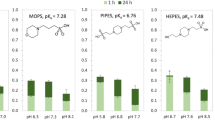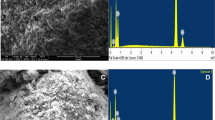Abstract
DESPITE the many important contributions that have been made to the literature during the past century, no completely satisfactory theory of cation toxicity has been formulated. Blake1 first concluded that there was a correlation between degree of toxicity and atomic weight (hence ‘heavy-metal’ poisons). Matthews2 and Jones3 later pointed out a relationship between metal ion toxicity and the ‘solution pressure’ (standard electrode potential) of the corresponding metals. Seifriz4 considered various other chemical properties of the ions in his attempt to find a satisfactory chemical explanation for the relative toxicity of cations. Shaw5–7, basing his arguments on results obtained with enzymes, postulated that metal ions killed aquatic organisms by combining with an essential group (probably—SH) on a key enzyme. Correlation with metal sulphide insolubility was demonstrated. An attempt was also made6 to relate the relative inhibitory efficiency of bivalent metal ions toward the enzyme urease with metal complex stability. At that time (early 1953), however, the field of co-ordination chemistry had not reached a stage of sufficient maturity for such a comparison to be successfully made. The explosive growth that has occurred during the past decade in our knowledge of the chemistry of co-ordination compounds necessitates a re-examination of the intriguing possibility that there exists a relationship between metal complex stability and the toxicity of metal ions to living organisms.
This is a preview of subscription content, access via your institution
Access options
Subscribe to this journal
Receive 51 print issues and online access
$199.00 per year
only $3.90 per issue
Buy this article
- Purchase on Springer Link
- Instant access to full article PDF
Prices may be subject to local taxes which are calculated during checkout
Similar content being viewed by others
References
Blake, J., J. Physiol., 5, 35 (1884).
Matthews, A. P., Amer. J. Physiol., 10, 290 (1904).
Jones, J. R. E., J. Exp. Biol., 17, 408 (1940).
Seifriz, W., Science, 110, 193 (1949).
Shaw, W. H. R., J. Amer. Chem. Soc., 76, 2160 (1954).
Shaw, W. H. R., Science, 120, 361 (1954).
Shaw, W. H. R., and Grushkin, B., Arch. Biochem. Biophys., 67, 447 (1957).
Irving, H., and Williams, R. J. P., J. Chem. Soc., 3192 (1953).
Basolo, F., and Pearson, R. G., Mechanisms of Inorganic Reactions, 16, 68 (John Wiley and Sons, Inc., New York, 1958).
Williams, R. J. P., in The Enzymes, second ed., edit. by Boyer, P. D., Lardy, H., and Myrbäch, K., 1, Chap. 9 (Academic Press, New York, 1959).
Williams, R. J. P., Biol. Rev., 28, 381 (1953).
Shaw, W. H. R., J. Amer. Chem. Soc. (in the press).
Lehninger, A. L., Physiol. Rev., 30, 393 (1950).
Anderson, B. G., Trans. Amer. Fisheries Soc., 78, 96 (1948) (pub. in 1950).
Jones, J. R. E., J. Exp. Biol., 16, 425 (1939).
McGuigan, H., Amer. J. Physiol., 10, 444 (1904).
Woodruff, L. L., and Bunzel, H. H., Amer. J. Physiol., 26, 190 (1909).
Author information
Authors and Affiliations
Rights and permissions
About this article
Cite this article
SHAW, W. Cation Toxicity and the Stability of Transition-Metal Complexes. Nature 192, 754–755 (1961). https://doi.org/10.1038/192754a0
Issue Date:
DOI: https://doi.org/10.1038/192754a0
This article is cited by
-
Directly Predicting Water Quality Criteria from Physicochemical Properties of Transition Metals
Scientific Reports (2016)
-
Toxicit�ten einiger Spurenmetalle
Naunyn-Schmiedeberg's Archiv f�r Experimentelle Pathologie und Pharmakologie (1962)
Comments
By submitting a comment you agree to abide by our Terms and Community Guidelines. If you find something abusive or that does not comply with our terms or guidelines please flag it as inappropriate.



